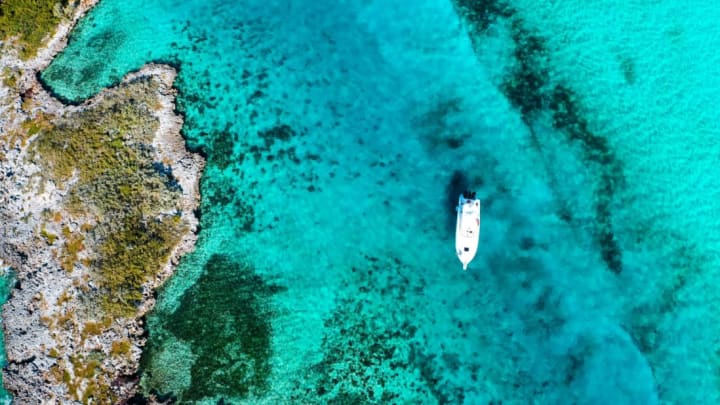The fertile red soils of Bermuda and the rich coral reefs of the Bahamas are a geological mystery. Both are made up of a specific combination of alien minerals and nutrients not found anywhere on the islands or in the ocean that surrounds them. Scientifically speaking, they should not exist.
But over the last decade, geologists have come up with an explanation for these ecological anomalies: They originated 5000 miles away in Africa. For more than a million years, dust from the Sahara Desert has hitched a ride on westward-traveling winds to the Caribbean. Bermuda and the Bahamas are, quite literally, an extension of the world’s largest desert.
But African dust storms aren’t just responsible for developing Bermuda’s clay-and-iron-abundant “terra rossa” and the coral reefs of the Bahamas; they also play an important role in protecting them from destructive hurricanes. Like atmospheric superheroes, the dust storms’ combination of dry air, strong winds, and cloud-suppressing particles appears to have the ability to stop hurricanes in their tracks.
From Desert to Tropical Paradise

In the summer months, dust storms, some as large as the continental United States, roll off the African coast every three to five days in a dry atmospheric shelf called the Saharan Air Layer. Sometimes they dissipate before they reach the eastern Atlantic. Other times, like in late June and early July 2020, they set sunsets afire from the Caribbean to the southeastern U.S.
The dust blown to Earth by these long-haul storms is packed with soil-enriching nutrients and iron that have completely altered parts of the natural landscape. Bermuda’s endemic dirt and sand is made up of the calcium carbonate leftovers of ancient coral, mollusks, and crustaceans, and the growth of abundant plant matter would be impossible without nutrient deposits from annual African dust storms.
Researchers hypothesize that the Bahamas’s underlying layer of calcium-rich rock and coral reefs wouldn’t have developed without Saharan dust, either—the dust is thought to help cyanobacteria fix nitrogen in the environment, allowing the carbonate layers to accumulate.
Hurricane-Smothering Sands
Climate scientists believe that Saharan dust storms may have an equally important job high above Earth. The summer dust storm season closely coincides with tropical storm and hurricane season, and most of them—around half of all tropical storms and 85 percent of the Atlantic’s most intense hurricanes—originate in Africa.
As they hurtle westward, hurricanes and dust storms mix it up over the Atlantic. But it’s not a fair fight. Hurricanes need humid air to form; dust storms are extremely dry. Hurricanes suck up moisture from the ocean and then release it as rain, while dust prevents moisture from rising into the atmosphere’s higher layers. Dust storms also have "vertical wind shear,” strong embedded winds that can break down a developing hurricane. Essentially, a Saharan dust storm is like a bone-dry, extremely powerful, hurricane-smothering blanket.
As hurricanes increase in frequency and strength alongside warming oceans and a changing climate, understanding exactly how they interact with dust storms may help researchers to identify which Atlantic storms are the most likely to intensify into life-threatening hurricanes. And if climate scientists can recognize the most destructive storms far in advance, those in their path may have a better chance of emerging unscathed when gray skies return to blue.
